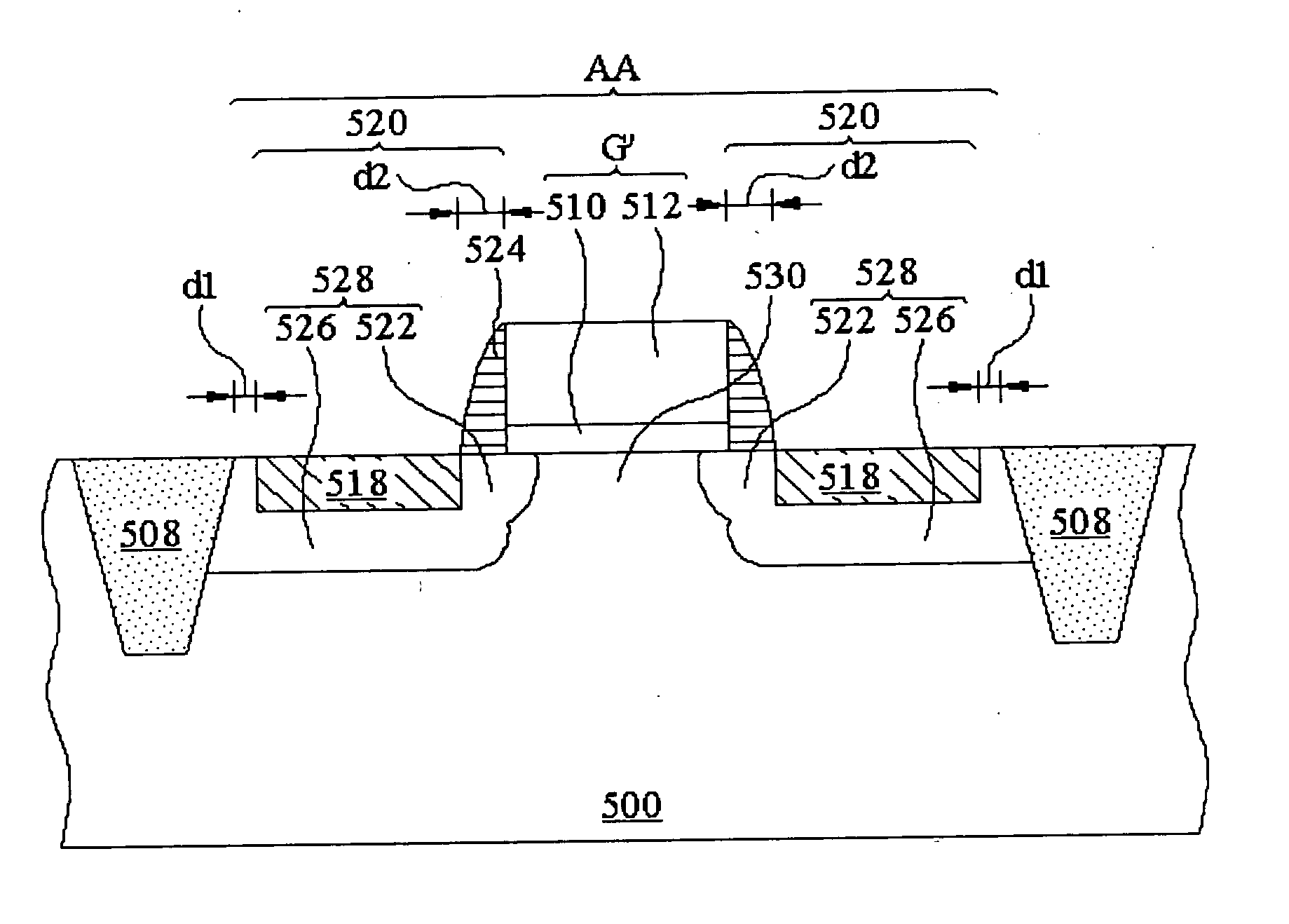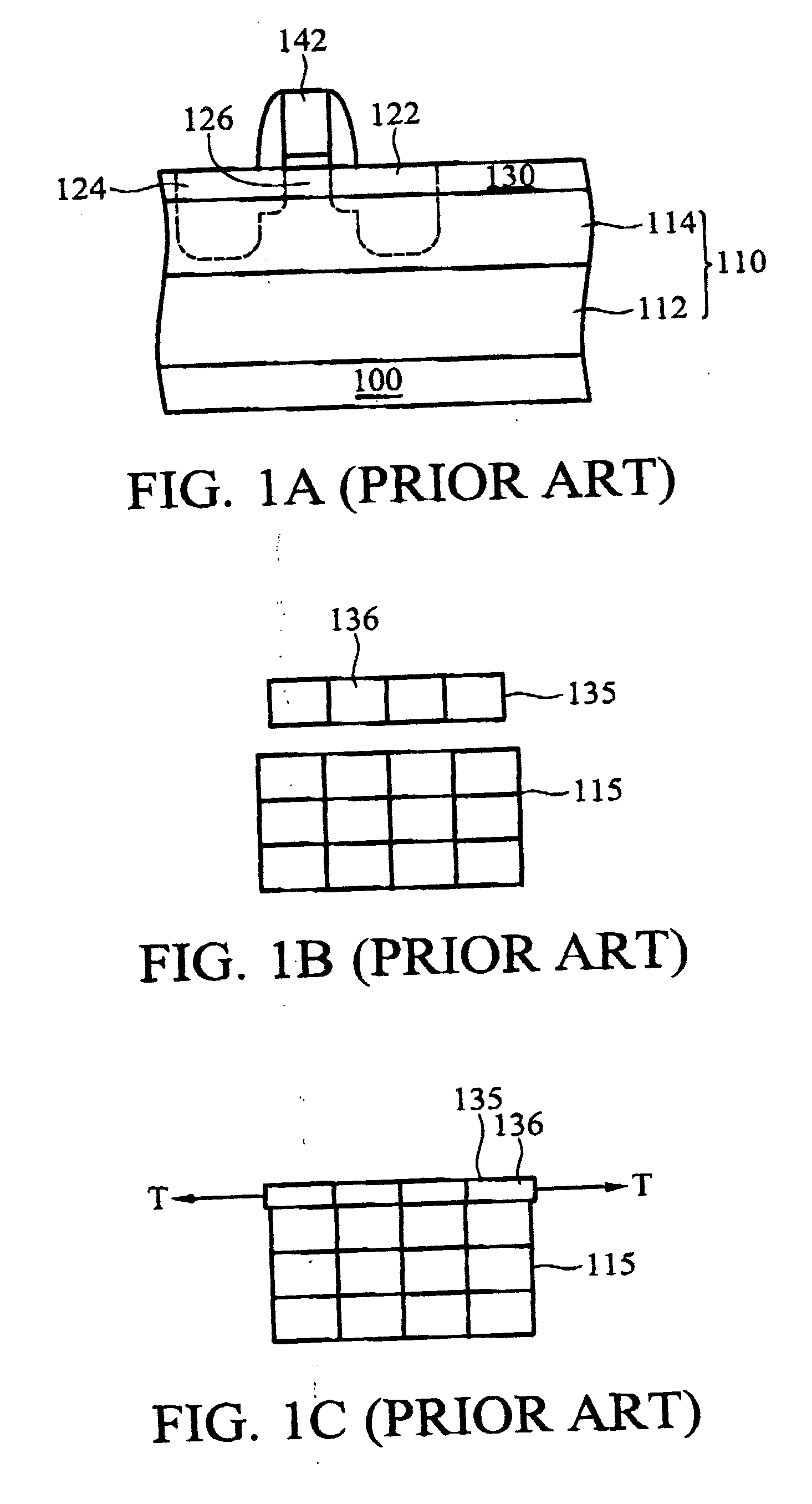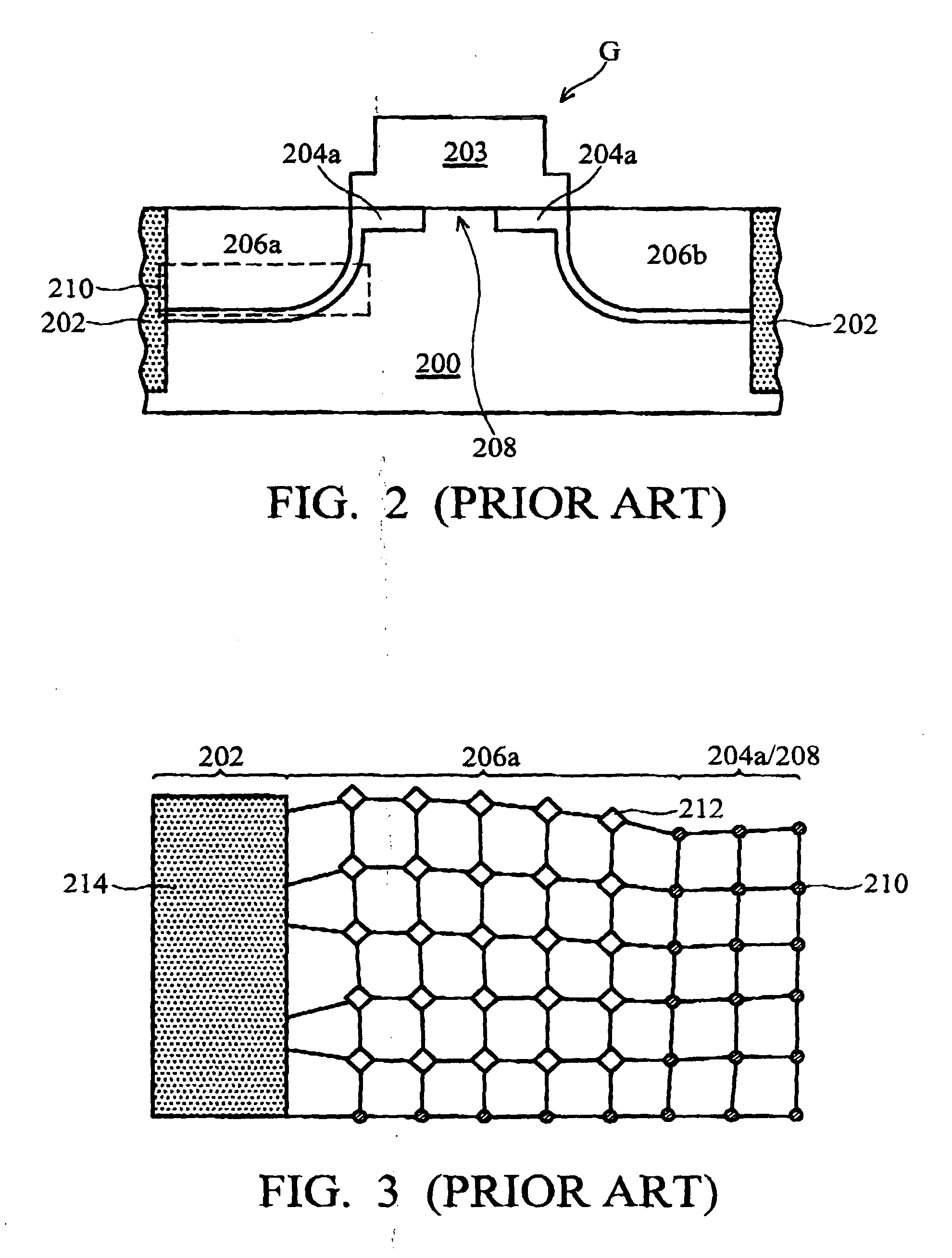Strained-channel semiconductor structure and method of fabricating the same
a strain-channel semiconductor and fabrication method technology, applied in the field of strain-channel semiconductor structure and the field of fabricating the same, can solve the problems of high defect density, high cost of approach, and possible strain relaxation
- Summary
- Abstract
- Description
- Claims
- Application Information
AI Technical Summary
Benefits of technology
Problems solved by technology
Method used
Image
Examples
first embodiment
[0054] A method of fabricating the strained-channel semiconductor structure of the invention is illustrated in FIGS. 4a to 4h.
[0055] In FIG. 4a, a substrate 300 of a first semiconductor material is provided. The substrate 300 may comprise a plurality of active areas (not shown) for forming devices thereon defined by a plurality of isolation structures (not shown) formed in the substrate 300, however an active area AA defined by two adjacent isolation regions 302 shown in FIG. 4a is provided to simplify the description. The first semiconductor material of the substrate 300 can be elemental, alloy or compound semiconductor material and is preferably an elemental semiconductor material such as silicon. The isolation region 302 can be, for example, a conventional shallow trench isolation (STI) region.
[0056] Next, a first gate stack G including a gate dielectric layer 304, a gate electrode layer 306, and a mask layer 308 sequentially stacked over a portion of the substrate 300 is forme...
second embodiment
[0075] The method of fabricating the strained-channel semiconductor structure illustrated in FIGS. 4a through 4h of the first embodiment of the present invention can also be applied to the application of forming a transistor array having a plurality of strained-channel transistors on a substrate.
[0076] Structures of the strained-channel semiconductor structure having a transistor array thereon are shown in FIGS. 5a and 5b to respectively illustrate a strained-channel transistor array formed over an active area AA defined by one or two isolation regions 302 in the substrate 300. Each transistor formed in the active area AA is illustrated as the strained-channel transistor 30a shown in FIG. 4c, for example. The gate structures (referring to the second gate structures G′) and adjacent source / drain regions 324 comprising the lattice-mismatched zone 314 are alternatively disposed on and in the substrate 300, forming a transistor array connected to functional circuits such as NOR circuit...
third embodiment
[0079] Another method of fabricating the strained-channel semiconductor structure of the invention is illustrated in FIGS. 6a to 6h.
[0080] In FIG. 6a, a substrate 400 of first semiconductor material is provided. The substrate 400 may comprise a plurality of active areas (not shown) for forming devices thereon defined by a plurality of isolation structures (not shown) formed in the substrate 400. The active area AA defined by two adjacent isolation regions 402 is shown in FIG. 6a to simplify the description. The first semiconductor material of the substrate 400 can be elemental, alloy or compound semiconductor material and is preferably an elemental semiconductor material such as silicon. The isolation region 402 can be, for example, a conventional shallow trench isolation (STI) region.
[0081] Next, a first gate stack G including a gate dielectric layer 404, a gate electrode layer 406, and a mask layer 408 sequentially stacked over a portion of the substrate 400 is formed in the act...
PUM
 Login to View More
Login to View More Abstract
Description
Claims
Application Information
 Login to View More
Login to View More - R&D
- Intellectual Property
- Life Sciences
- Materials
- Tech Scout
- Unparalleled Data Quality
- Higher Quality Content
- 60% Fewer Hallucinations
Browse by: Latest US Patents, China's latest patents, Technical Efficacy Thesaurus, Application Domain, Technology Topic, Popular Technical Reports.
© 2025 PatSnap. All rights reserved.Legal|Privacy policy|Modern Slavery Act Transparency Statement|Sitemap|About US| Contact US: help@patsnap.com



